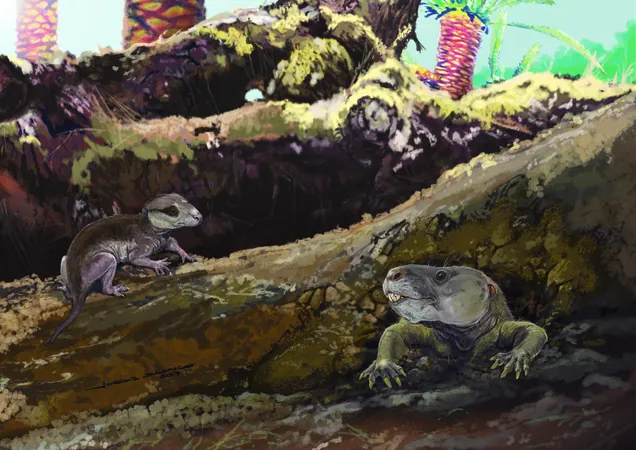
Groundbreaking Brazilian Fossils Reveal Surprising Chapters in Mammal Evolution
2024-09-25
Groundbreaking Brazilian Fossils Reveal Surprising Chapters in Mammal Evolution
In an astonishing breakthrough, newly unearthed fossils of ancient species Brasilodon quadrangularis and Riograndia guaibensis are shedding light on the remarkable evolutionary journey of mammalian jaw structures and middle ear bones. This discovery challenges previous timelines and deepens our understanding of how mammals developed the intricate anatomy that sets them apart from other vertebrates.
The Distinctive Anatomy of Mammals
Mammals are distinct in their sophisticated jaw structure, characterized by multiple components, notably the presence of three middle ear bones, a stark contrast to their earlier vertebrate relatives, which had only one. Researchers have long been intrigued by the evolution of these features, and the latest fossil findings suggest that the developmental journey was far more intricate than previously believed.
Advanced Techniques Uncover New Insights
Using advanced CT scanning techniques, scientists meticulously reconstructed the jaw joint anatomy of these early mammal-precursors for the first time. Remarkably, they identified a 'mammalian-style' connection between the skull and the lower jaw in Riograndia guaibensis, which lived 17 million years earlier than the previously oldest known example. However, intriguingly, Brasilodon quadrangularis did not exhibit this jaw connection, despite being more closely aligned genetically with mammals.
Insights Published in *Nature*
Published in the prestigious journal *Nature*, this research highlights the idea that key features associated with mammals did not evolve in isolation but rather through parallel experimentation among different groups of cynodonts. These findings suggest a mosaic-like evolution where various cynodont lineages independently developed traits once thought to be unique to mammals, raising questions about what it truly means to be a mammal.
Significance of Discoveries
Lead author James Rawson from Bristol's School of Earth Sciences emphasized the significance of this discovery: "The emergence of the mammalian jaw joint was a pivotal moment in the evolution of mammals. Our Brazilian fossils reveal that various cynodont groups were trying out different jaw types, leading to features we once thought only belonged to mammals emerging in multiple lineages."
Broader Implications of the Research
The implications of this research extend well beyond these specific fossils. It reveals a much richer and more testing evolution of early mammals than previously acknowledged, suggesting that the developing mammalian traits were part of multiple evolutionary experiments occurring simultaneously across different cynodont species.
Ongoing Research and International Collaboration
Dr. Agustín Martinelli from the Museo Argentino de Ciencias Naturales in Buenos Aires commented on how the small Brazilian species continue to unlock vital aspects of mammalian origins, stating, "We’re only scratching the surface, and our international collaborations promise to uncover even more exciting details."
Future Exploration in South America
The research team is enthusiastic about delving deeper into the South American fossil beds, recognized as a treasure trove for unlocking rich evolutionary histories. According to Professor Marina Soares of the Museu Nacional in Brazil, "No other region in the world boasts such a diverse range of cynodont species closely related to early mammals."
Conclusion: Uncovering the Past
With every discovery, we inch closer to understanding the complex evolutionary narratives that gave rise to modern mammals. James Rawson concluded, "This study opens up new avenues for paleontological exploration, as these fossils serve as invaluable links to the varied evolutionary pathways that shaped the mammals we know today."
Stay Tuned for More Implications of Fossil Discoveries
Stay tuned for more revelations from the depths of prehistoric times—who knows what other surprises the ancient past holds?


 Brasil (PT)
Brasil (PT)
 Canada (EN)
Canada (EN)
 Chile (ES)
Chile (ES)
 España (ES)
España (ES)
 France (FR)
France (FR)
 Hong Kong (EN)
Hong Kong (EN)
 Italia (IT)
Italia (IT)
 日本 (JA)
日本 (JA)
 Magyarország (HU)
Magyarország (HU)
 Norge (NO)
Norge (NO)
 Polska (PL)
Polska (PL)
 Schweiz (DE)
Schweiz (DE)
 Singapore (EN)
Singapore (EN)
 Sverige (SV)
Sverige (SV)
 Suomi (FI)
Suomi (FI)
 Türkiye (TR)
Türkiye (TR)